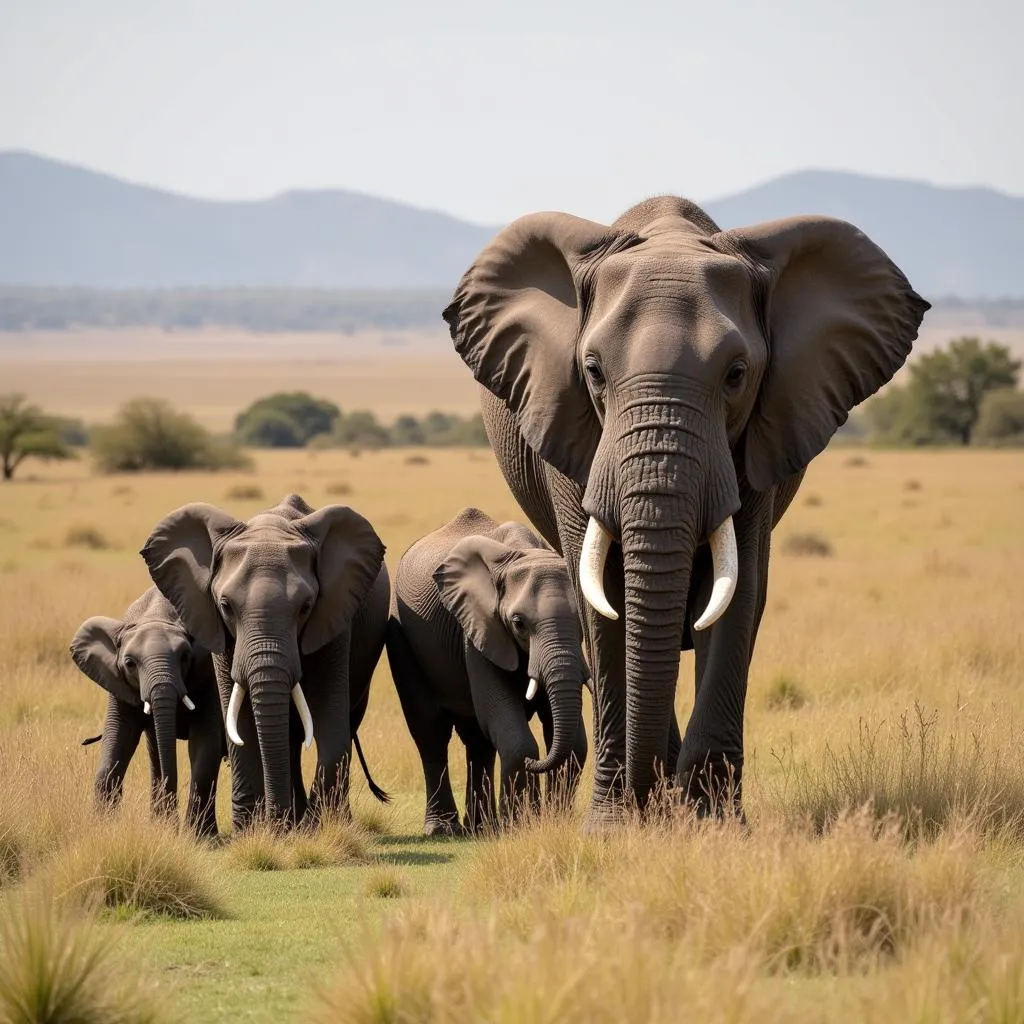Mammoth vs. African Elephant: Giants of the Past and Present
When we think of colossal land mammals, mammoths and African elephants immediately spring to mind. These majestic creatures, though separated by time, have captivated our imaginations for centuries. But how much do we really know about their similarities, differences, and the fascinating lives they lived?
A Tale of Two Giants: Unraveling the Differences
While both mammoths and African elephants share the title of “giants,” they differ in several key aspects. Firstly, let’s address the elephant in the room – their timeline. Mammoths roamed the Earth during the last ice age, going extinct around 4,000 years ago. African elephants, on the other hand, continue to grace our planet today.
Their physical appearances also reveal intriguing distinctions. Mammoths, specifically the woolly mammoth, were well-equipped for colder climates with their thick fur coats, smaller ears, and a layer of subcutaneous fat. In contrast, African elephants sport larger ears for thermoregulation, a smoother hide, and less pronounced tusk curvature.
Size Matters: Who Takes the Crown?
The question of size is always a point of fascination. While both animals were undeniably enormous, mammoths, particularly the steppe mammoth, were generally larger than their African counterparts. The largest mammoth species could reach heights of up to 12 feet and weigh up to 12 tons, while African elephants typically reach about 10.5 feet and weigh up to 6 tons.
 African Elephant Family in Savanna
African Elephant Family in Savanna
Social Butterflies or Solitary Creatures?
Both mammoths and African elephants are believed to have been social animals, living in herds. Evidence suggests that mammoths, much like elephants today, had complex social structures and communication methods.
A Look at Their Diets: What Was on the Menu?
Both mammoths and African elephants are herbivores, but their diets differed slightly based on their environment and available vegetation. Mammoths primarily consumed grasses, sedges, and forbs, while African elephants have a more diverse diet that includes fruits, leaves, bark, and even roots.
Extinction versus Conservation: A Stark Reality
The extinction of mammoths, primarily due to climate change and potentially human hunting, serves as a stark reminder of the delicate balance between nature and living creatures. Today, African elephants face their own set of challenges, including habitat loss, poaching, and human-wildlife conflict. Conservation efforts are crucial in ensuring the survival of these magnificent animals for generations to come.
Frequently Asked Questions:
1. Were mammoths larger than African elephants?
While both were incredibly large, certain mammoth species, like the steppe mammoth, could grow larger than African elephants.
2. Did mammoths and African elephants live at the same time?
No, mammoths went extinct around 4,000 years ago, while African elephants still exist today.
3. Are African elephants endangered?
Yes, African elephants are listed as endangered due to habitat loss, poaching, and human-wildlife conflict.
Stepping into the Future: Learning from the Giants
The stories of mammoths and African elephants offer valuable lessons about adaptation, survival, and the interconnectedness of life on Earth. By understanding these magnificent creatures, both past and present, we gain a deeper appreciation for the natural world and the importance of protecting it.
 Modern Day Elephant Conservation Efforts
Modern Day Elephant Conservation Efforts
Remember, we can all play a part in ensuring the survival of African elephants. Support conservation organizations, spread awareness, and advocate for responsible tourism practices. The future of these gentle giants rests in our hands.
For any inquiries or assistance, reach us at:
Phone Number: +255768904061
Email: [email protected]
Or visit us at: Mbarali DC Mawindi, Kangaga, Tanzania. Our customer support team is available 24/7.


